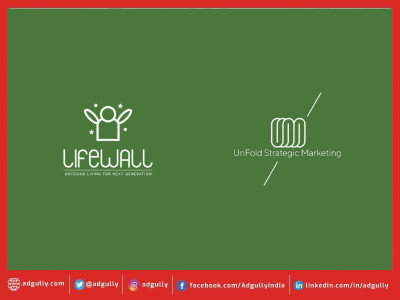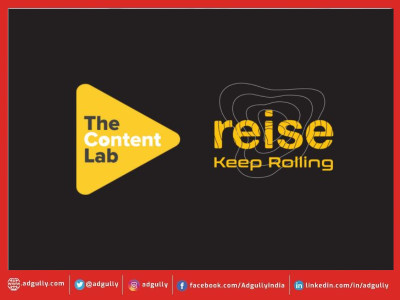Flovie Martins on the uniqueness in BFSI communication mandates
As the COVID-19 continues to spread across the country, it appears that almost every business has suffered a financial setback. The pandemic has not only impacted everyday living but has also had a tremendous economic impact on our country, with most states still under stay-at-home orders and a large number of enterprises still shuttered.
In March, when stay-at-home orders began to spread across the country, the BSFI sector began to close branches or drastically reduce their hours of operation in order to assist stem the spread of the new coronavirus. Prior to the pandemic, however, foot traffic at their branches was falling, showing that customer demand for mobile and internet banking was on the rise. Communicating with the consumers digitally and maintaining relationships with the stakeholder was very essential during these times.
In an interview with Adgully, Flovie Martins, Head - Corporate Communications & CSR, Future Generali India Life Insurance, explained how is the insurance industry different from other corporate industries with regard to communication, “While the basic tenets of communication remain consistent across industries, the BFSI sector has certain nuances as it involves the promotion and sale of financial products and services. Any documentation or communication material that we receive from financial institutions is traditionally designed or drafted with financial jargons that are difficult to understand at a common man level. Further, there is a heightened need to educate customers on finance-related topics that aim to improve their knowledge of financial products and services before purchase. This exercise helps to also forge strong relationships with stakeholders. By simplifying the otherwise difficult to understand financial jargons, the customer can now make an informed decision while purchasing financial products.”
With regard to important changes in the communication and branding space during the last five years she said, “Over the years, there has been a tectonic shift in how brands communicate with their stakeholders. Storytelling is no more about pushing your brand or product, rather connecting via life stories and situations that are easy to relate to in today’s crazy lifestyle. Secondly, the onset of the COVID-19 pandemic unleashed an acceleration in digital content consumption. With the rise of digital mediums and platforms to share content and smart devices to consume that content, ‘Quantity’ over ‘Quality’ has taken precedence. Bite-sized content is more preferred over long-form content. This trend is sure to get stronger as internet penetration improves. The downside of quantity over quality is the increase in unauthenticated content going viral that brings with it all kinds of risks. Hence there is now an urgent need to have some kind of regulation in place to curb these risks.”
Adding further on the adaption of digital technology and data management she said, “There is now a clear need to keep abreast of the latest digital trends and utilise mediums like social media platforms and websites to the max while reaching out to the targeted audience. This has brought about a key challenge of not only managing the current digital platforms but also monitoring what’s the latest in digital technology in the market. The ability to adapt and run integrated communication platforms instead of multiple ones to communicate with stakeholders - will be the way forward. Data management is going to be the real game-changer for an organization’s survival amongst competitors. It is imperative to have a robust data combing and management system in place and then optimize how you utilize those findings with the right corresponding customer communication strategy.”
The other aspects are employee communications. Employee communications have moved to the front seat during COVID 19 times. Employers have realised the importance and need to communicate and engage with their people by being empathetic to the current situation and by giving people a voice and listening to their needs. Here employee communication platforms like Yammer and Workplace because of their features have gained popularity and mediums like this will only grow in the market. Also, talent plays a key role, hiring the right talent across all communication-related verticals will ensure the right strategy is in place with quality content going out. This will capture the required eyeballs and ears in an otherwise overcrowded and clustered marketspace. Further ‘out of the box’ hiring will also be a game-changer for the organization. For E.g., hiring a psychologist to analyze data, to then create impactful content for the targeted audience.
How challenging it was for her to maintain a balance between managing the team & office work on the one hand and family responsibilities on the other as boundaries blurred while working from home Flovie said: ” As companies cautiously resumed operations within the pandemic phase, the focus shifted to employing technology aids to bring employees and customers together, albeit on a slew of digital platforms. This has resulted in improved response time and transformed how information or services are delivered and consumed today. This change however did bring about a host of challenges for employees who had to shift over to working from the confines of their homes and involved a steep learning curve for some. Personally, it was a period where the focus was on the adaptability of technology and bringing teams together to communicate more efficiently. The biggest example is being able to handle 3 crisis-related situations from home in one year – something that every corporate communicator dreads.
Further, heading the communications vertical entails being responsive to urgent matters and prioritizing responses in order of importance. This puts a lot of focus on great time management and being wise with how much of it is allocated to every task; skills that I have developed immensely on the personal front. My personal mantra has been to avoid procrastination, have a clear mind about one’s goals. Then being organized with what needs delegation and executing them within working hours. When followed, these habits ensure that one has adequate time for personal and familial matters and promotes an overall healthy work-life balance. So much so that I actually have a ‘me time’ now to devote to a hobby that I could never have when having to travel to the office.
Multiple studies have shown how women leaders performed better during the COVID-19 crisis. Commenting on this, she said: “Women are often perceived to be better at crisis management as they are more adept at donning multiple responsibilities in both the personal and professional domains. That said, in today’s world it would be fair to assume that the boundaries are blurring with both partners in a family assuming equal responsibilities. A case in point is the WFH situation during the pandemic.”
“Additionally, it is important to be a good listener and react to situations after considering all facets, rather than jumping to preconceived notions or falling prey to prejudices. The COVID-19 pandemic was an example of a global crisis that required this level of thinking and those who could adapt first eventually took the lead in guiding their organizations to safer waters.”
On her five learnings as a women leader, she said: “Voice yourself in a room. if you want to be heard and taken seriously. Either you will be corrected – in which case you learn something, Or you end up teaching others something new. Secondly, have a set of values and principles that one abides by even in times of adversity. Not only does this create a sense of respect amongst team members, but also helps in developing the right attitude that serves as a guiding example for others to emulate. Always put in your best, which means nothing less than a 100%. If it is not good for you don’t dish it out. Simple. Never stop learning new things in life, from people or situations. Being in a state of constant learning is downright essential today. Respect and value.”

















Share
Facebook
YouTube
Tweet
Twitter
LinkedIn